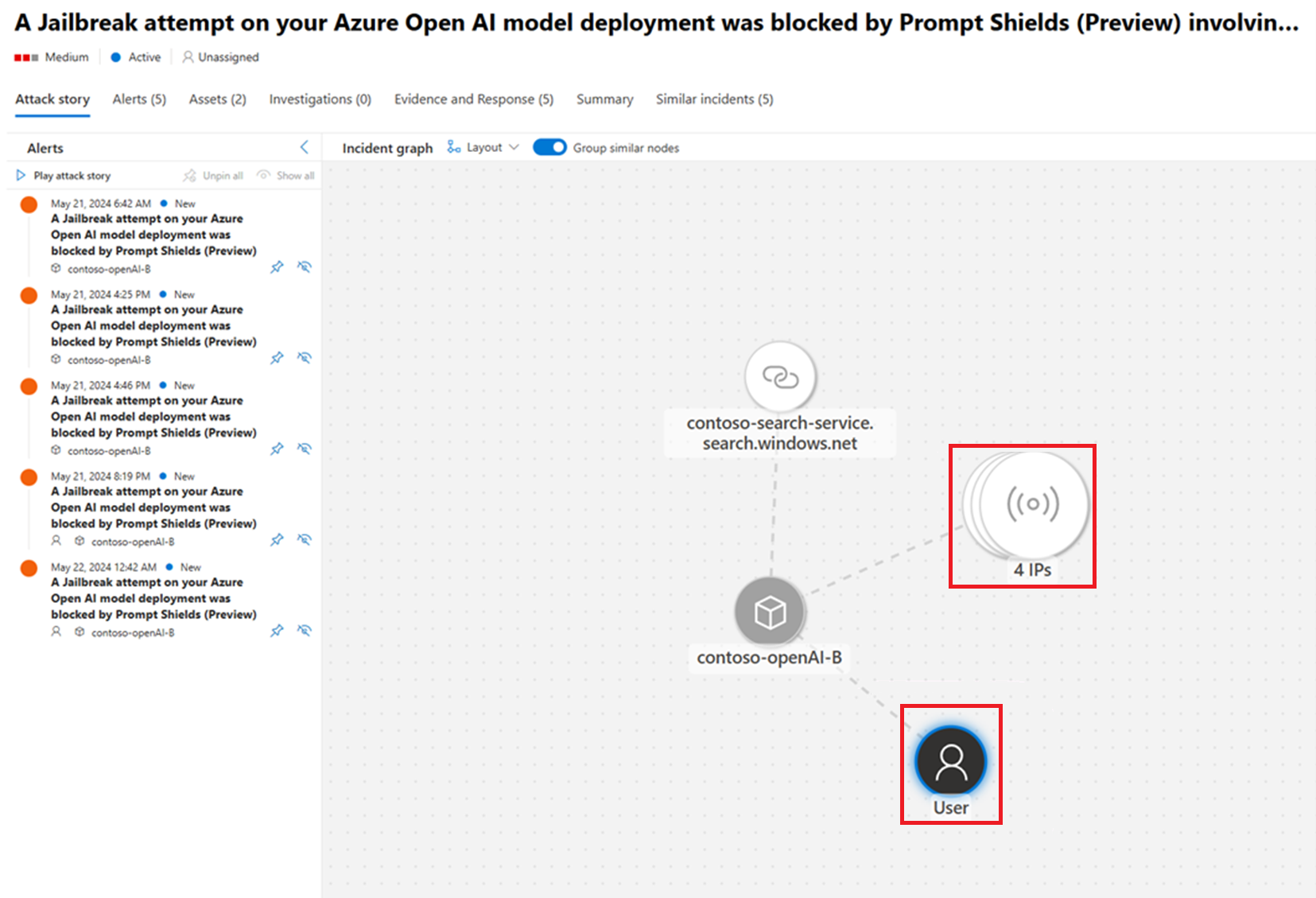Gain application and end-user context for AI alerts
Microsoft Defender for Cloud's threat protection for AI workloads allows you to enhance the actionability and security value of the generated AI alerts by providing both end-user and application context.
In most cases, scenarios leveraging AI services are built as part of an application, so the API calls to the AI service originate from a web application, compute instance, or an AI gateway. This architecture setup introduces complexity due to a lack of context when investigating AI requests to determine the business application or the end-user involved.
Defender for Cloud, together with Azure AI, enables adding parameters to your Azure AI API calls to propagate critical end-user, or application context to Defender for Cloud's AI alerts. This, in turn, leads to more effective triaging and results. For example, when adding end-user IP or identity, you can block that user or correlate incidents and alerts by that user. When adding application context, you can prioritize or determine whether suspicious behavior could be considered standard for that application in the organization.
Prerequisites
Read up on Overview - AI threat protection.
Enable threat protection for AI workloads (preview) on an AI application, with Azure OpenAI underlying model, directly through the Azure OpenAI Service. Note, this feature is currently not supported when leveraging models consumed through the Azure AI model inference API.
Add security parameters to your Azure OpenAI call
To receive AI security alerts with more context, you can add any or all of the following sample UserSecurityContext parameters to your Azure OpenAI API calls.
All of the fields in the UserSecurityContext are optional.
For end-user context, we recommend passing the EndUserId and SourceIP fields at a minimum. The EndUserId and SourceIP fields provide Security Operations Center (SOC) analysts the ability to investigate security incidents that involve AI resources and generative AI applications.
For application context, simply pass the applicationName field, as a simple string.
If a field’s name is misspelled, the Azure OpenAI API call will still succeed. The UserSecurityContext schema doesn't require validation to pass through the Azure OpenAI user field. Application developers should ensure that a valid JSON is passed in every request made by the application to Azure OpenAI.
UserSecurityContext schema
The exact schema can be found in Azure OpenAI REST API reference documentation.
The user security context object is part of the request body of the chat completion API.
This feature is currently not supported when leveraging models deployed through the Azure AI model inference API.
Availability
| Source | Version support | Comments |
|---|---|---|
| Azure OpenAI REST API | 2025-01-01 version | - |
| Azure .NET SDK | v2.2.0-beta.1 (2025-02-07) or higher | - |
| Azure Python SDK | v1.61.1 or higher | The support is provided by appending to "extra_body" object |
| Azure JS/Node SDK | v4.83.0 or higher | The support is provided by appending to "extra_body" object |
| Azure Go SDK | v0.7.2 or higher | - |
